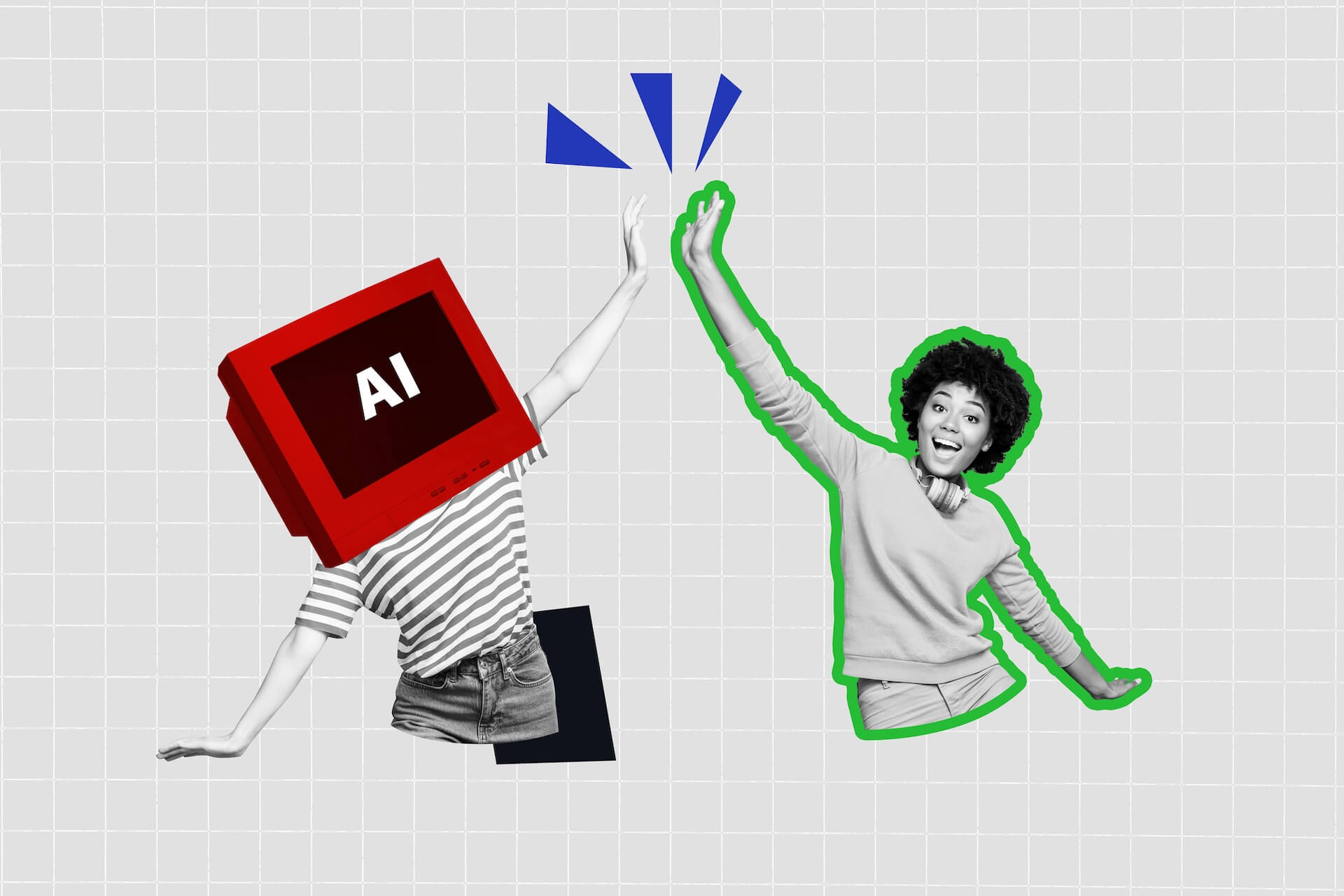In the race to scale with AI content creation, distribution and optimisation, many B2B marketing teams are discovering that speed without structure can quickly lead to noise, not impact. AI can churn out content fast but without a clear workflow, that content often misses the mark, clutters your channels, or drains your team’s time in endless revisions.
At KLIQ, we have seen this challenge play out firsthand. As a B2B digital marketing agency in Australia since 2013, we have worked with lean but ambitious marketing teams navigating high expectations with limited resources. Whether it is a HR tech solution launch with a three-week runway or a brand repositioning across multiple channels in the healthcare sector, we have been the behind-the-scenes long-term partner helping marketing teams turn pressure into performance.
What turns AI output into strategic content is a solid, repeatable workflow. One that leverages AI for efficiency, but relies on human oversight for alignment, nuance, and brand voice. When that balance is struck, the workflow itself becomes a competitive edge.
In this article, we break down two content workflows used with real clients and tailored to different B2B marketing realities:
The 3-Phase Workflow is ideal for fast-paced teams who need to:
- Launch content quickly
- Run reactive, trend-based campaigns
- Test and iterate messaging at high speed
The 7-Phase Workflow is designed for teams managing complexity, scale or compliance, where it is critical to:
- Maintain consistency across teams, regions, or verticals
- Ensure editorial and legal oversight
- Support long buying journeys and brand-building efforts
Whether you are moving fast or building for long-term impact, you will find a structure here to suit your strategy and team dynamics.
Why AI-powered workflows matter in scaling B2B content marketing efficiency and results
Modern B2B content marketing teams are under pressure to deliver more assets with faster turnarounds and broader reach. AI makes that possible. Unfortunately, without an intentional process to support these activities, teams quickly find that more volume doesn’t equal more value.
Without a workflow:
- AI outputs can become inconsistent, off-brand, or redundant
- editors spend time cleaning rather than creating
- strategic alignment weakens as content grows.
A hybrid workflow solves this by giving structure to both human and machine contributions. It defines where AI can support and where humans must lead.
The 3-phase AI + human B2B content workflow designed for speed
This content creation workflow suits product sprints, event campaigns, and time-sensitive thought leadership. It’s perfect for any situation where “good enough, now” beats “perfect, later.”
Phase 1: Insight and alignment
- Start with clarity. Let AI take on the early analysis, but ensure a human sets the final direction.
- Use AI tools to summarise keyword data, scan competitor content, and identify trending topics across your ecosystem.
- Bring in first-party signals: CRM patterns, win/loss data, and campaign goals.
- Let strategists review, refine, and select the angle that aligns with the brief.
Phase 2: Content production and refinement
This phase in the content creation workflow is where speed matters most, and where human writers can find themselves stalled or blocked. Luckily, this phase is where AI shines.
- Use AI to generate content outlines, first drafts, and headline variations.
- Human writers or editors step in to restructure, inject nuance, and eliminate fluff.
- Build in rapid QA checkpoints for tone, accuracy, brand fit, compliance.
This content production and refinement phase operates well on a 24–72 hour turnaround. Fast, frequent and high-quality B2B content marketing output is possible with AI preparing the canvas and humans refining the message.
Phase 3: Distribution and iteration
Once content is live, AI takes on the repackaging and monitoring. Humans steer performance reviews.
- Use AI to repurpose the content into emails, social posts, slide decks or snippets.
- Monitor performance through CTRs, time on page, bounce rates, and qualitative feedback.
- Humans decide which content gets refreshed, expanded, or retired.
For example, a blog post turns into a sales email and three LinkedIn posts, each adjusted by AI, checked by humans.
The 7-phase AI + human B2B content workflow for scale and governance
For larger teams, complex governance requirements, or for example where the content is a core part of your lead generation or brand-building, you might want an extended workflow that unpacks the 3 steps.
A longer workflow may also better support multi-region marketing, long buying journeys, or tightly governed industries,
Your team may even find it useful to use both the high velocity and longer workflows, in different contexts.
Phase 1: Strategic alignment
This phase is about ensuring every piece of content you produce has a strategic “why” behind it, designed by humans. Complete these next steps for big picture strategic alignment:
- Define your content mission, buyer personas, and thematic pillars.
- Map content roles across the funnel (what converts, what nurtures, what educates)
- Align stakeholders from marketing, sales, product, and brand.
Phase 2: Insight synthesis
In this phase, AI becomes your research analyst, with data that you provide:
- Use AI to extract insights from SEO tools, competitor analysis, and internal knowledge bases.
- Combine this with insights from sales calls, product roadmaps, and customer support.
- Then, marketing and content leaders interpret these findings and prioritise the messages that will move the needle.
Phase 3: Briefing and ideation
We know that a tight brief saves hours of cleanup downstream. The same goes for prompts, so learning how to write clear, helpful prompts for AI is essential, for example by completing an AI content marketing course. This phase sets the stage for consistent quality:
- Use AI to generate draft outlines, questions, or angles to test, using prompts that cover tone, audience, purpose, and structure.
- Plan upfront to repurpose the content. How will the asset be reused across different channels and formats?
Phase 4: B2B content creation
Now the engine runs:
- AI handles first-pass writing, formatting, and adaptation across lengths or tones.
- Subject matter experts and creatives handle the heavy lifting: thought leadership, storytelling, visuals.
- Maintain version control so nothing goes live before it is ready.
- Streamline by integrating AI generation tools with collaborative tools like Google docs
Phase 5: Editing and governance
You are aiming for quality marketing content that is polished, professional and aligned with your sector’s regulatory landscape, standards and editorial style guidelines. This phase is where quality is preserved:
- Every content asset passes through a structured review workflow for brand voice, grammar, accessibility, compliance, and fact checking.
- Consider a gatekeeper model: final sign-off from brand manager. Ensure your legal team has signoff on high-risk content.
Phase 6: Distribution and repurposing
Publish once, repurpose often. For example, a longform guide or whitepaper can be atomised into a newsletter series, a YouTube explainer and a series of case studies.
- AI can spin out related assets for different buyer stages or regions.
- Build a repurposing dashboard to track where content has been used and in what format.
- Let automation handle scheduling but let people decide when and where it lands.
Phase 7: Performance and optimisation
Close the loop:
- AI dashboards can summarise performance quickly, but interpretation still belongs to the strategist.
- Look beyond traffic and track conversion impact, sales usage, and buyer engagement.
- Feed learnings back into the briefing stage.
How can B2B organisations integrate AI into smarter content workflows to increase productivity, agility and impact
AI can help marketing teams move faster but without the right workflow, that speed often comes at the expense of strategy, brand voice, and quality. For employers, a well-designed content creation process isn’t just a tool for efficiency, it is a way to scale without sacrificing what makes your brand meaningful. For employees, it is the foundation that turns AI from a source of uncertainty into a source of confidence.
A strong workflow creates shared clarity, aligns teams around purpose, and helps everyone, from writers to strategists play to their strengths. When AI is paired with human insight and thoughtful processes, content becomes more focused, more resilient, and more impactful. Whether you’re leading the team or part of it, the right structure ensures you’re not just keeping up with change, but shaping it.
That is exactly what we focus on at KLIQ. As a B2B digital marketing agency trusted by B2B organisations across sectors like HR tech, healthcare, SaaS, education, local government, and professional services, we have been helping teams move from reactive content creation to a place of confidence and clarity. Our AI-assisted content strategies are shaped by experience, not just tools and our AI masterclasses are designed with the same principle. No one-size-fits-all slideshows. Each course is tailored to your industry, your tech stack, and your team’s current capabilities.
If you are feeling the pressure of “doing more with less” or figuring out where AI fits in your already full plate, we are here to help. With the right workflow, the right partner, and the right training, your team doesn’t just keep up, they lead.



